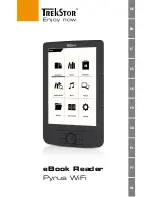
5-82
Phaser Series Scanner Product Reference Guide
Hardware Handshaking
The data interface consists of an RS-232C port. The port has been designed to operate either
with or without the hardware handshaking lines, RTS, Request to Send, and CTS, Clear to
Send.
If Standard RTS/CTS handshaking is selected, scan data is transmitted according to the
following sequence:
t
The scanner reads the CTS line for activity. If CTS is asserted, the scanner waits up
to two seconds for the host to negate the CTS line. If, after two seconds (default), the
CTS line is still asserted, the scanner sounds a transmit error and any scanned data
is lost.
t
When the CTS line is negated, the scanner asserts the RTS line and waits up to two
seconds for the host to assert CTS. When the host asserts CTS, data is transmitted.
If, after two seconds (default), the CTS line is not asserted, the scanner sounds a
transmit error and discards the data.
t
When data transmission is complete, the scanner negates RTS 10 msec after sending
the last character.
t
The host should respond by negating CTS. The scanner checks for a negated CTS
upon the next transmission of data.
During the transmission of data, the CTS line should be asserted. If CTS is deasserted for
more than 50 ms between characters, the transmission is aborted, the scanner sounds a
transmission error, and the data is discarded.
If the above communications sequence fails, the scanner issues an error indication. In this
case, the data is lost and must be rescanned.
If Hardware Handshaking and Software Handshaking are both enabled, Hardware
Handshaking will take precedence.
Note: The DTR signal is jumpered active.
Note: When using RTS/CTS handshaking and a PL460 PhaserLink cradle,
there is a 4 ms delay for teh information to travel between the host
and the scanner. If this setup is necessary, scan the
Intercharacter
Delay
bar code on page 5-89 and set the delay for 5 ms or more.
















































